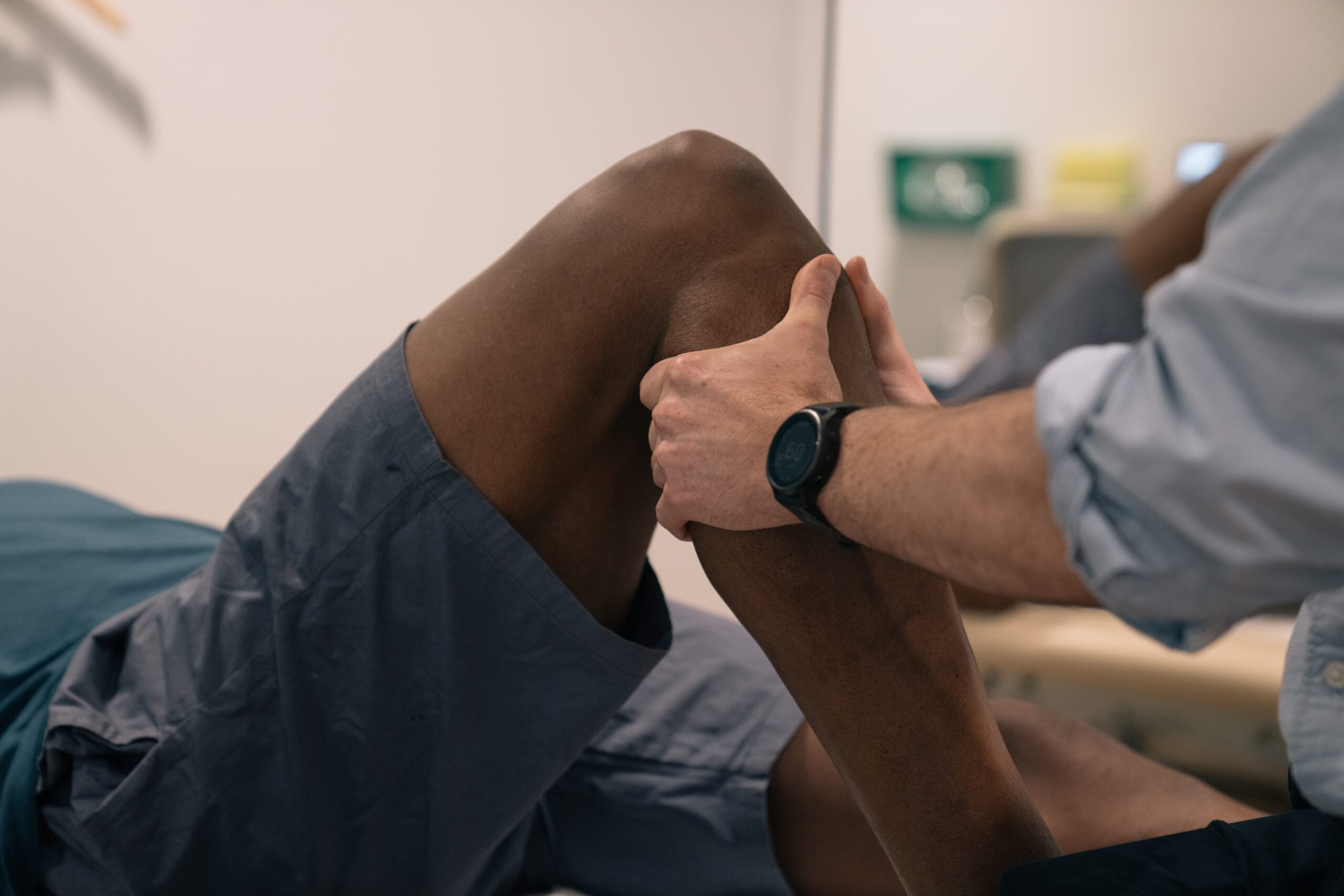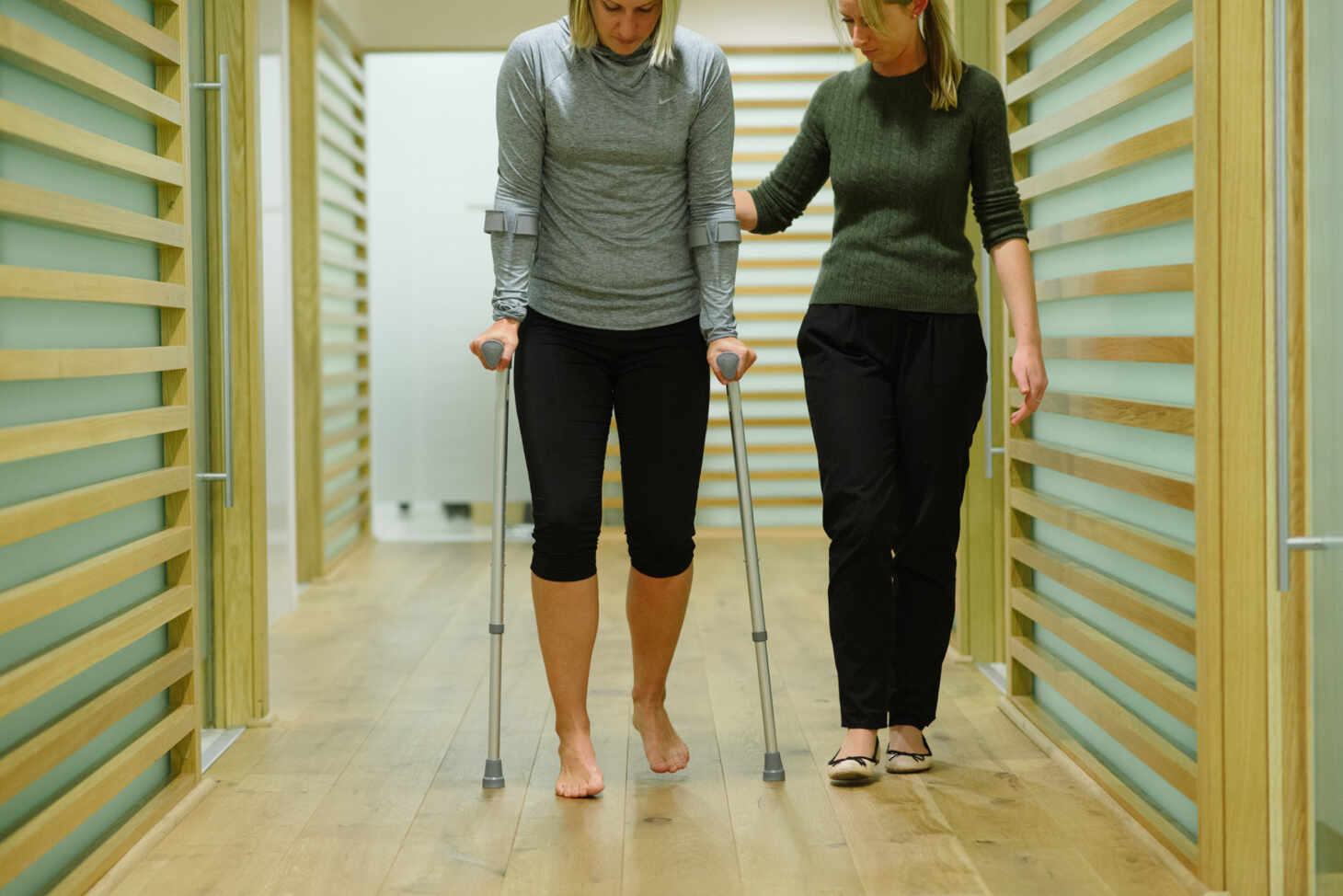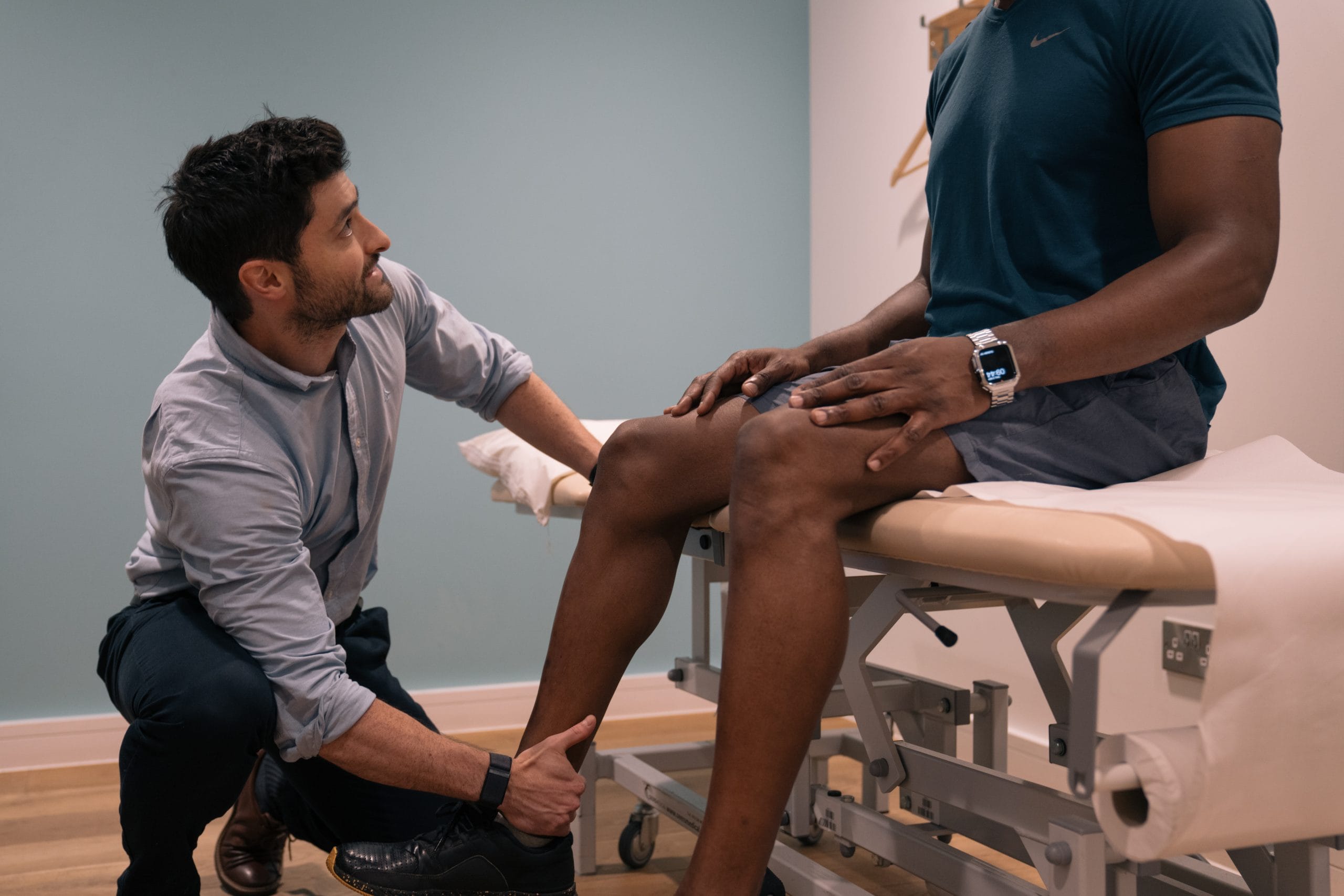Could My Knee Pain Be Osteoarthritis?

Dr Sam Botchey
Consultant in Sport, Exercise & Musculoskeletal Medicine
- 28 November, 2024
- Lower Limb
- Podiatry
- 5 min read
Knee pain can be frustrating, especially when it starts interfering with your daily life. Whether it’s a dull ache when walking, stiffness in the morning, or sharp pain when climbing stairs, many people wonder if it could be more than just a “bad knee.” One common cause of knee pain, especially as we age, is osteoarthritis (OA). But what exactly is it, and how can you treat it?

What is Osteoarthritis?
Osteoarthritis is a condition that affects the joints, especially in places like the knees. It happens when the natural cushioning inside your knee, called cartilage, starts to break down. But it’s not just about cartilage wearing away—it’s more complicated than that.
When cartilage breaks down, the bones in your knee can start to rub against each other, which is painful. The knee also becomes inflamed, meaning it might swell and feel stiff.
Over time, your body tries to fix the problem by growing extra bits of bone, but these often make the joint even less smooth and harder to move.
However, Osteoarthritis isn’t just about getting older. Past injuries, being overweight, or even family history can increase your chances of developing it.
How Do I Know If I Have Knee Osteoarthritis?
Here are some common signs that could indicate osteoarthritis:
- Pain: It often feels like a deep ache in your knee. It may get worse when you’re active, but in some cases, it can also hurt when you’re resting.
- Stiffness: This is especially noticeable in the morning or after sitting still for a long time.
- Swelling: Your knee may look or feel puffy.
- Grinding or Clicking Sounds: You might notice noises when you move your knee.
- Feeling Unstable: Your knee might feel weak or like it could give way.
- Difficulty Moving: You might not be able to bend or straighten your knee as much as you used to.
If these symptoms sound familiar, it’s worth getting seen by a specialist Consultant in Sport, Exercise and Musculoskeletal Medicine.
Why Does Osteoarthritis Happen?
Osteoarthritis doesn’t just happen overnight. Several factors can increase your likelihood of developing it, such as:
- Age: The older we get, the more likely it is to develop.
- Old Injuries: If you’ve injured your knee in the past, like a ligament tear or a bad sprain, it could lead to osteoarthritis later.
- Being Overweight: Carrying extra weight puts more pressure on your knees, which can speed up damage.
- Genetics: If someone in your family has osteoarthritis, you might be more likely to get it too.
- Jobs or Sports: Repeating the same knee movements over and over can increase your risk, especially in physically demanding activities.
How is Knee Osteoarthritis Diagnosed?
If you’re worried about your knee pain, a Consultant in Sport, Exercise & Musculoskeletal Medicine can help figure out if it’s osteoarthritis.
At Pure Sports Medicine, we start by asking about your symptoms, when they started, and how they’re affecting you. Then, we’ll examine your knee to check for pain, swelling, and how well it moves, this often includes a bedside ultrasound, which can be done on-site, and is great at looking for swelling and examining some of the bony joint lining.
We might also refer you on for an X-ray to take a closer look at the bones and joints. Sometimes, we use a scan like an MRI to see the cartilage and other soft tissues in more detail.
These types of images can help us to get to the root of the pain in order to obtain an accurate diagnosis and get you started on the best possible path for recovery.
How Can You Treat Knee Osteoarthritis?
The good news is that there are many ways to manage knee osteoarthritis and reduce your pain. While there’s no cure, the right treatment plan can help you stay active and feel better.
1. Stay Active
Exercise is one of the best ways to keep your knee healthy. Strengthening the muscles around your knee can help take pressure off the joint. Low-impact activities like swimming, cycling, and yoga are great options because they don’t put too much stress on your knees.
2. Lose a Little Weight
Even losing a small amount of weight can reduce the strain on your knees and make a big difference in how they feel.
3. Try Physiotherapy
A Physiotherapist can teach you exercises to strengthen your knee and improve how it moves. They might also use treatments like massage or heat therapy to ease pain.
4. Pain Relief
You can try over-the-counter painkillers like paracetamol or anti-inflammatory creams to help with pain or your Consultant might recommend stronger medications if needed.
5. Injections
If other treatments aren’t helping, injections into the knee can provide relief. These include:
- Steroids: These reduce inflammation but are usually only a short-term solution.
- Hyaluronic Acid (Viscosupplementation): These injections mimic the natural fluid in your knee, helping it move more smoothly.
- PRP (Platelet-Rich Plasma): PRP uses a small sample of your blood, which is processed to concentrate the platelets. These platelets contain growth factors that may help reduce inflammation and promote healing within the joint.
- Arthrosamid: A cutting-edge treatment designed to provide long-lasting relief by cushioning the joint, diminishing pain and improving the function of the knee affected by knee osteoarthritis (1).
A New Option: Arthrosamid Injections
We’re excited to offer a new treatment for knee osteoarthritis, called Arthrosamid. This is a unique type of injection designed to provide long-lasting relief from knee pain (2, 4).
What is Arthrosamid?
Arthrosamid is a permanent injectable hydrogel (3) that delivers long-lasting, proven pain relief without the need for surgery (2, 4). . Once injected, it stays in the knee and integrates into the surrounding tissues (3), providing support and comfort for a long time (2, 4).
Why Consider Arthrosamid?
- Long-Lasting Relief: Many patients experience relief for up to two years after just one injection (5). New research even shows up to 4 years of relief for some! (2)
- Minimally Invasive: The injection is quick, and you can return to your normal activities soon after (1).
- Safe and Effective: It’s a non-absorbable, biocompatible, injectable hydrogel that doesn’t break down over time (1).
Is Arthrosamid Right for You?
Arthrosamid is a great option for people with mild to moderate knee osteoarthritis who:
- Haven’t found enough relief from other treatments.
- Want to delay or avoid knee surgery.
- Are looking for a longer-lasting solution than traditional injections
Take the First Step Toward Pain Relief
Knee pain doesn’t have to stop you from living the life you love. We’re here to help you explore the best options for managing your osteoarthritis, including innovative treatments like Arthrosamid and PRP.
It’s time to get back to doing what you enjoy, pain-free.
References:
- Arthrosamid®, Instructions For Use. Release Date March 2022. 10082-003.
- Bliddal, H., et al. (2024) A Prospective Study of Polyacrylamide Hydrogel Injection for Knee Osteoarthritis: Results From 4 Years After Treatment. Presented at EORS 2024.
- Christensen, L., et al. (2016). Histological Appearance of the Synovial Membrane after Treatment of Knee Osteoarthritis with Polyacrylamide Gel Injections: A Case Report. Journal of Arthritis. Vol 5: 217.
- Bliddal, H., et al. (2024) 3 year follow-up from a randomized controlled trial of intra-articular polyacrylamide hydrogel injection in subjects with knee osteoarthritis. Poster LB-31, OARSI 2024 World Congress on Osteoarthritis.
- Bliddal, H., et al. (2022). A Prospective Study of Polyacrylamide Hydrogel Injection for Knee Osteoarthritis: Results From 2 Years After Treatment. Poster presented at OARSI 2022. Osteoarthritis and Cartilage. Vol 30(1): S371-S372. DOI:10.1016/j.joca.2022.02.499.

Advice
Over the last 20+ years our experts have helped more than 100,000 patients, but we don’t stop there. We also like to share our knowledge and insight to help people lead healthier lives, and here you will find our extensive library of advice on a variety of topics to help you do the same.
OUR ADVICE HUBS See all Advice Hubs

